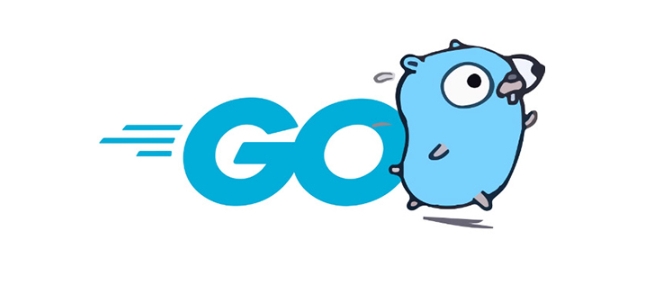Build tags are the build phase instructions in the Go project to control source file compilation. 1. It is written in the form of a special comment at the beginning of the source file. It is recommended to use the //go:build syntax; 2. It supports combining conditions according to the operating system, architecture or custom tags, such as //go:build linux && (amd64 || arm64); 3. It is specified by the -tags parameter during construction, such as go build -tags "prod linux"; 4. It is commonly used for platform-related implementations and functional modules to enable/disable; 5. Notes include: tags must be located before the package declaration, tags must be added during testing, and complex conditional expressions must be avoided. Correct use of build tags can improve code structure clarity and cross-platform maintenance capabilities.

Using build tags in a Go project is an effective way to control which source files participate in compilation. It is not annotation, nor runtime logic, but a directive that works during the build phase. Simply put, build tags allows you to selectively include or exclude certain code files based on different platform, environment or functional needs.

What are build tags
Build tags is a special comment line written at the beginning of the Go source file, which tells go tool whether the file should be compiled. The format is usually like this:
// build linux,amd64
Or a more modern way is to put it on the package statement:

//go:build linux && amd64
Note: These two syntaxes cannot be mixed. It is recommended to use the second type //go:build , which is a new method introduced in Go 1.17, which is more flexible and easier to understand.
How to write effective build tags
The key to writing build tags is to clarify your target platform or conditions. You can use combinations of operating system, architecture, custom tags, etc. to limit the scope of compilation.

Common tags include:
- Operating system:
linux,darwin,windows - Architecture:
amd64,arm64,386 - Custom tags: such as
prod,debug,nocgo, etc.
For example:
//go:build linux && (amd64 || arm64) package main
The above line indicates that the file is only compiled under Linux and the architecture is amd64 or arm64.
If you want to specify that multiple files under different conditions participate in the construction, you can pass them in the command line:
go build -tags "prod linux"
This will match files with prod and linux tags at the same time.
Actual usage scenarios and suggestions
Scenario 1: Implementation by platform
For example, you have a package that calls the system API, using .dll on Windows, .so on Linux, and .dylib on macOS. You can write three files separately and add the corresponding build tags:
driver_windows.go://go:build windows package driver
driver_linux.go://go:build linux package driver
driver_darwin.go://go:build darwin package driver
In this way, no matter which platform you execute go build , the corresponding implementation file will be automatically selected.
Scenario 2: Enable/disable certain functional modules
Sometimes you want to not include some experimental features or debugging code when building. You can use custom tags to control:
//go:build debug package main
Then whether or not -tags debug is added during the construction determines whether these files are included.
Things to note
- Sequence issue : The build tag must appear before the package declaration.
- Blank line restrictions : In the old version, there should be no blank line after tags; Go 1.17 relaxed this limit, but it is recommended to follow the package line for compatibility.
- Don't forget to add tags when testing : if the tagged file is involved when running
go test, you should also add the-tagsparameter, otherwise you may not see the expected results. - Avoid overcomplexity : Don’t have too long tag conditions, otherwise it will be prone to errors. It can be split into multiple files or abstracted into a common interface.
Basically that's it. Using build tags well can make the code structure clearer, and can also improve the maintainability and cross-platform capabilities of the project. Although it seems to be just a small comment, it can save you a lot of runtime costs for judgment.
The above is the detailed content of How to use build tags in Go. For more information, please follow other related articles on the PHP Chinese website!

Hot AI Tools

Undress AI Tool
Undress images for free

Undresser.AI Undress
AI-powered app for creating realistic nude photos

AI Clothes Remover
Online AI tool for removing clothes from photos.

Clothoff.io
AI clothes remover

Video Face Swap
Swap faces in any video effortlessly with our completely free AI face swap tool!

Hot Article

Hot Tools

Notepad++7.3.1
Easy-to-use and free code editor

SublimeText3 Chinese version
Chinese version, very easy to use

Zend Studio 13.0.1
Powerful PHP integrated development environment

Dreamweaver CS6
Visual web development tools

SublimeText3 Mac version
God-level code editing software (SublimeText3)

Hot Topics
 What are the implications of Go's static linking by default?
Jun 19, 2025 am 01:08 AM
What are the implications of Go's static linking by default?
Jun 19, 2025 am 01:08 AM
Go compiles the program into a standalone binary by default, the main reason is static linking. 1. Simpler deployment: no additional installation of dependency libraries, can be run directly across Linux distributions; 2. Larger binary size: Including all dependencies causes file size to increase, but can be optimized through building flags or compression tools; 3. Higher predictability and security: avoid risks brought about by changes in external library versions and enhance stability; 4. Limited operation flexibility: cannot hot update of shared libraries, and recompile and deployment are required to fix dependency vulnerabilities. These features make Go suitable for CLI tools, microservices and other scenarios, but trade-offs are needed in environments where storage is restricted or relies on centralized management.
 How do I create a buffered channel in Go? (e.g., make(chan int, 10))
Jun 20, 2025 am 01:07 AM
How do I create a buffered channel in Go? (e.g., make(chan int, 10))
Jun 20, 2025 am 01:07 AM
To create a buffer channel in Go, just specify the capacity parameters in the make function. The buffer channel allows the sending operation to temporarily store data when there is no receiver, as long as the specified capacity is not exceeded. For example, ch:=make(chanint,10) creates a buffer channel that can store up to 10 integer values; unlike unbuffered channels, data will not be blocked immediately when sending, but the data will be temporarily stored in the buffer until it is taken away by the receiver; when using it, please note: 1. The capacity setting should be reasonable to avoid memory waste or frequent blocking; 2. The buffer needs to prevent memory problems from being accumulated indefinitely in the buffer; 3. The signal can be passed by the chanstruct{} type to save resources; common scenarios include controlling the number of concurrency, producer-consumer models and differentiation
 How can you use Go for system programming tasks?
Jun 19, 2025 am 01:10 AM
How can you use Go for system programming tasks?
Jun 19, 2025 am 01:10 AM
Go is ideal for system programming because it combines the performance of compiled languages ??such as C with the ease of use and security of modern languages. 1. In terms of file and directory operations, Go's os package supports creation, deletion, renaming and checking whether files and directories exist. Use os.ReadFile to read the entire file in one line of code, which is suitable for writing backup scripts or log processing tools; 2. In terms of process management, the exec.Command function of the os/exec package can execute external commands, capture output, set environment variables, redirect input and output flows, and control process life cycles, which are suitable for automation tools and deployment scripts; 3. In terms of network and concurrency, the net package supports TCP/UDP programming, DNS query and original sets.
 How does Go ensure memory safety without manual memory management like in C?
Jun 19, 2025 am 01:11 AM
How does Go ensure memory safety without manual memory management like in C?
Jun 19, 2025 am 01:11 AM
Goensuresmemorysafetywithoutmanualmanagementthroughautomaticgarbagecollection,nopointerarithmetic,safeconcurrency,andruntimechecks.First,Go’sgarbagecollectorautomaticallyreclaimsunusedmemory,preventingleaksanddanglingpointers.Second,itdisallowspointe
 How do I call a method on a struct instance in Go?
Jun 24, 2025 pm 03:17 PM
How do I call a method on a struct instance in Go?
Jun 24, 2025 pm 03:17 PM
In Go language, calling a structure method requires first defining the structure and the method that binds the receiver, and accessing it using a point number. After defining the structure Rectangle, the method can be declared through the value receiver or the pointer receiver; 1. Use the value receiver such as func(rRectangle)Area()int and directly call it through rect.Area(); 2. If you need to modify the structure, use the pointer receiver such as func(r*Rectangle)SetWidth(...), and Go will automatically handle the conversion of pointers and values; 3. When embedding the structure, the method of embedded structure will be improved, and it can be called directly through the outer structure; 4. Go does not need to force use getter/setter,
 What are interfaces in Go, and how do I define them?
Jun 22, 2025 pm 03:41 PM
What are interfaces in Go, and how do I define them?
Jun 22, 2025 pm 03:41 PM
In Go, an interface is a type that defines behavior without specifying implementation. An interface consists of method signatures, and any type that implements these methods automatically satisfy the interface. For example, if you define a Speaker interface that contains the Speak() method, all types that implement the method can be considered Speaker. Interfaces are suitable for writing common functions, abstract implementation details, and using mock objects in testing. Defining an interface uses the interface keyword and lists method signatures, without explicitly declaring the type to implement the interface. Common use cases include logs, formatting, abstractions of different databases or services, and notification systems. For example, both Dog and Robot types can implement Speak methods and pass them to the same Anno
 How do I use the io package to work with input and output streams in Go?
Jun 20, 2025 am 11:25 AM
How do I use the io package to work with input and output streams in Go?
Jun 20, 2025 am 11:25 AM
TheGoiopackageprovidesinterfaceslikeReaderandWritertohandleI/Ooperationsuniformlyacrosssources.1.io.Reader'sReadmethodenablesreadingfromvarioussourcessuchasfilesorHTTPresponses.2.io.Writer'sWritemethodfacilitateswritingtodestinationslikestandardoutpu
 How do I use string functions from the strings package in Go? (e.g., len(), strings.Contains(), strings.Index(), strings.ReplaceAll())
Jun 20, 2025 am 01:06 AM
How do I use string functions from the strings package in Go? (e.g., len(), strings.Contains(), strings.Index(), strings.ReplaceAll())
Jun 20, 2025 am 01:06 AM
In Go language, string operations are mainly implemented through strings package and built-in functions. 1.strings.Contains() is used to determine whether a string contains a substring and returns a Boolean value; 2.strings.Index() can find the location where the substring appears for the first time, and if it does not exist, it returns -1; 3.strings.ReplaceAll() can replace all matching substrings, and can also control the number of replacements through strings.Replace(); 4.len() function is used to obtain the length of the bytes of the string, but when processing Unicode, you need to pay attention to the difference between characters and bytes. These functions are often used in scenarios such as data filtering, text parsing, and string processing.






